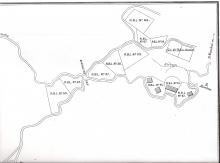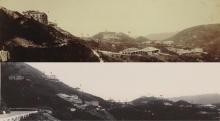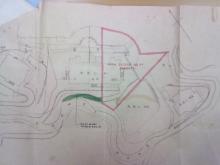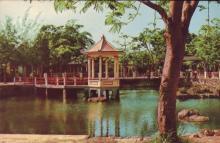Get Gwulo's books
Directory
Click on your area of interest to choose from over 30,000 pages about old Hong Kong:
- Images & photos
- View - View galleries - View new - Create - Forum topics
- View - Create - Places & buildings
- View map - View new - Create - Streets
- View map - View new - Create - People
- View - View new - Create - Organisations
- View all - View new - Create - Diaries & memoirs
- View - View new - Create diary - Create page - Events
- View - View new - Create - Jurors lists
- View - Type a page
Or choose a popular article:
User login
Timeline
A timeline of Places at this site.
This:
- Magdalen Terrace [1887-1941]
Newer:





Comments
Wartime Accounts referring to the Magdalen Terrace
As noted in the 1924 and 1950 map, Magdalen Terrace is 526-527 Coombe Road.
1924: http://gwulo.com/atom/14275
1950: http://gwulo.com/atom/15669#comment-22125
The number for the Peak District was revised after the war and 526-527 Coombe Road became present-day 15-17 Coombe Road which is not occupied by the Coombe Apartments.
In Tony Bantam's Not the Slightest Change: The Defence of Hong Kong, 1941, it was mentioned that the following personnel from the Royal Canadian Corps of Signals (R.C.C.S.) were killed at "562 Peak Road" (refer to pg. 149):
It was noted by Bantam in the footnotes that:
Those buried at 562 The Peak were killed by a shell, having set up their radio in a front room - vulnerable to shellfire - rather than the back. However, other records speak of burials at 526 Coombe Road. This is a Wan Chai Gap address, perhaps more credible.
As a side note the other individuals who were buried at 526 Coombe Road were:
Bantam's assumption that Damant, Greenberg and Sharp were killed at Magdalen Terrace is substantiated by an account two RCCS veterans who survived the ordeal, Gerry Gerrard and Roland "Rolly" D'Amours. Gerrard recalled that his compatriots were killed on 19 December at Wanchai Gap. According to Roland's account:
I crossed the room on the north side and was just coming into the room on the south side when a 9.2 shell crashed through the north wall and exploded right in the middle of the sleeping men. The blast threw me forward and my head slammed into a wall so hard that it broke the straps inside of my steel helmet, and gave me a terrible headache. I tried to go through the room on the north side to get medical help, but the dust was so thick and the screams of the dying men so horrible that is was like going through hell. (Source: http://beyondthecall-hongkong.blogspot.hk/2011_08_01_archive.html)
From the above accounts, it could be concluded that:
In 18 January 2014, a Japanese artilery shell and some 7.62mm cartridges was found in the bushes between 23 Coombe Road and the Police Museum (27 Coombe Road) nearby. Here is a link to the Wenweipo article with a very nice picture of the shell:
http://paper.wenweipo.com/2014/01/18/HK1401180048.htm
This finding substantiates the RCCS veterans' account of heavy shelling in the Wanchai Gap area and further supports the fact that Magdalene Terrace was most likely destroyed by the explosion in 19 December 1941. And it is also fortunate that none of the shells hit Stonyhurst at present-day 23 Coombe Road (http://gwulo.com/node/7736) is now at Grade 1 historical building . . . and which Cheung Kong is using as collateral to bargain with the government for a piece of greenbelt site for residential development in a valuable piece of greenbelt land which serves as a buffer to the historic Aberdeen Country Park. In fact the issue is now on the news again:
http://news.rthk.hk/rthk/en/component/k2/1262491-20160526.htm
Association with J. J. Francis
As noted in the entry on 23 Coombe Road, Stonyhurst (http://gwulo.com/node/7736), J. J. Francis was the owner in of Magdalen Terrace. Information in the Public Records Office show that J. J. Francis purchased both R.B.L. 41 and 42 in 1886. Stonyhurst was built on R.B.L 42 while Magdalene Terrace was built on 42. A block plan from 1922 shows Magdalen Terrace:
http://gwulo.com/atom/14281 .
The outline of the building is clearly different than the present-day Coombe Apartments. So the 1947 date from the Coombe Apartments entry is quite plausible.